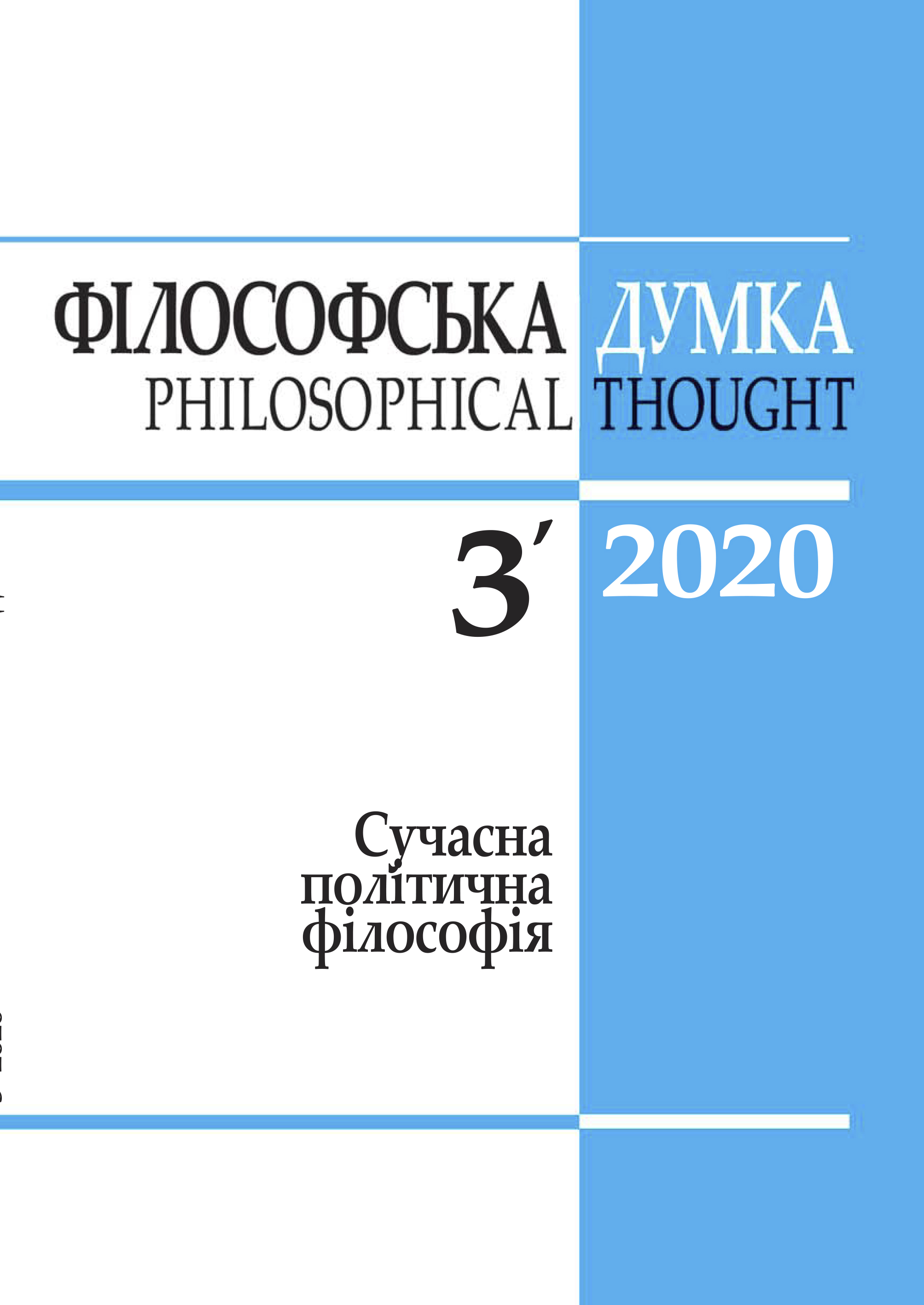Philosophical discussions around cosmology
PHILOPSOPHY AND METHODOLOGY OF SCIENCES
DOI:
https://doi.org/10.15407/fd2020.03.096Keywords:
сosmology, philosophy of cosmology, UniverseAbstract
This paper is a continuation of the previous work: V. Prits and V. Kuznetsov “The main fea- tures of the cosmological picture of the world.” After examining some of the discussions around newborn cosmology, the article considers cosmological problems from the point of view of the philosophy of modern cosmology. It is emphasized that today a single and coordi- nated view of cosmology and its philosophy has not been formed.
The main objectives of the study are were, firstly, to identify some philosophical, methodological and anthropological problems in the study of the Universe and, secondly, to focus on the interac- tion of philosophy and cosmology.
It has been revealed that the cosmological principles on which almost all cosmological theories and models are based have a long and dramatic ideological history and philosophical founda- tion, and the concept of “Multiverse” is saturated with ontological and epistemological puzzles. The principles of Bruno-Copernicus and the anthropic cosmological principles are proposed to be considered in the light of the discovery of exoplanets.
References
Anderson, P. (1972). More is different. Science, 177, 393-396. DOI: 10.1126/science.177.4047.393
https://doi.org/10.1126/science.177.4047.393
PMid:17796623
Barnes, L. (2012). The Fine-Tuning of the Universe for Intelligent Life. Publications of the Astronomical Society of Australia, 29, 529-564. DOI: 10.1071/AS12015
https://doi.org/10.1071/AS12015
Barrow, J., Tipler, F. (1986). Anthropic Cosmological Principle. New York: Oxford University Press. DOI: 10.1063/1.2820190
https://doi.org/10.1063/1.2820190
Boudry, M., Blancke, S., Braeckman, J. (2010). How Not to Attack Intelligent Design Creationism: Philosophical Misconceptions About Methodological Naturalism. Foundations of Science, 15, 227-244. DOI: 10.1007/s10699-010-9178-7
https://doi.org/10.1007/s10699-010-9178-7
Carter, B. (1974). Large number coincidences and the anthropic principle in cosmology. In: M.S. Longair (Ed.), Confrontation of Cosmological Theories with Observational Data. Dor- drecht: Springer. DOI: 10.1007/978-94-010-2220-0_25
https://doi.org/10.1007/978-94-010-2220-0_25
Carter, B. (1983). The anthropic principle and its implications for biological evolution. Philo- sophical Translation of Royal Society A, 310, 347-363. DOI: 10.1098/rsta.1983.0096 Dicke, R. (1961). Dirac's Cosmology and Mach's Principle. Nature, 192, 440-441. DOI: 10.1038/192440a0
https://doi.org/10.1038/192440a0
Dingle, H. (1937). Modern Aristotelianism. Nature, 139, 784-786. DOI: 10.1038/139784a0 Dirac, P. (1937). The Cosmological Constants. Nature, 139, 323. DOI: 10.1038/139323a0
https://doi.org/10.1038/139323a0
Dyshlevyi, P., Kuznetsov, V. (1973). Nicolaus Copernicus and modern physical picture of theworld. [In Ukrainian]. Philosophical Thought, 1, 82-92.
Everett, H. (1956). The Many-Worlds Interpretation of Quantum Mechanics. Retrieved from: https://www-tc.pbs.org/wgbh/nova/manyworlds/pdf/dissertation.pdf
Gale, G., Shanks, N. (1996). Methodology and the Birth of Modern Cosmological Inquiry. Studies in History and Philosophy of Modern Physics, 3, 279-296. DOI: 10.1016/S1355-2198(96)00008-1
https://doi.org/10.1016/S1355-2198(96)00008-1
Gale, G., Urani, J. (1993). Philosophical midwifery and the birthpangs of modern cosmology. American Journal of Physics, 61, 66-73. DOI: 10.1119/1.17386
https://doi.org/10.1119/1.17386
Jose, J., Iliadis, Ch. (2011). Nuclear astrophysics: the unfinished quest for the origin of the elements. Retrieved from: https://arxiv.org/pdf/1107.2234.pdf. DOI: 10.1088/0034-4885/74/9/096901
https://doi.org/10.1088/0034-4885/74/9/096901
Kant, I. (2000). Critique of pure reason. [In Ukrainian]. Kyiv: Yunivers.
Kiritsis, E. (1997). Introduction to Superstring Theory. Retrieved from: https://cds.cern.ch/record/333445/files/9709062.pdf
Krymskyi, S., Kuznetsov, V. (1983). Weltanschauung's Categories in Modern Science. [In Ukrainian]. Kyiv: Naukova Dumka.
Linde, A.D. (1983). Chaotic inflation. Physics Letters B journal, 129, 177-181. DOI: 10.1016/0370
https://doi.org/10.1016/0370-2693(83)90837-7
Milne, E.A. (1932). World Structure and the Expansion of the Universe. Nature, 130, 9-10. DOI: 10.1038/130009a0
https://doi.org/10.1038/130009a0
Prantzos, N. (2013). A joint analysis of the Drake equation and the Fermi paradox. Retrieved from:https://arxiv.org/ftp/arxiv/papers/1301/1301.6411.pdf. DOI: 10.1017/S1473550413000037
https://doi.org/10.1017/S1473550413000037
Robertson, H.P. (1933). Relativistic Cosmology. Rev. Mod. Phys., 5, 62-90. DOI: 10.1103/RevModPhys.5.62
https://doi.org/10.1103/RevModPhys.5.62
Rosenthal, I.L. (1984). Elementary particles and structure of the Universe. Planet Earth and the Universe. [In Russian]. Moscow: Nauka.
Stenger, V. (2011). The Fallacy of Fine-Tuning: Why the Universe Is Not Designed for Us. New York:Prometheus Books. DOI: 10.1080/00107514.2011.649788
https://doi.org/10.1080/00107514.2011.649788
Sturm, S. et al. (2014). High-precision measurement of the atomic mass of the electron. Retrievedfrom: https://arxiv.org/ftp/arxiv/papers/1406/1406.5590.pdf. DOI: 10.1038/nature13026
https://doi.org/10.1038/nature13026
PMid:24553144
Downloads
-
PDF (Українська)
Downloads: 393
Published
How to Cite
Issue
Section
License
Authors who publish with this journal agree to the following terms:
- Authors retain copyright and grant the journal right of first publication.
- Authors are able to enter into separate, additional contractual arrangements for the non-exclusive distribution of the journal's published version of the work (e.g., post it to an institutional repository or publish it in a book), with an acknowledgement of its initial publication in this journal.
- Authors are permitted and encouraged to post their work online (e.g., in institutional repositories or on their website) prior to and during the submission process, as it can lead to productive exchanges, as well as earlier and greater citation of published work (See The Effect of Open Access).


